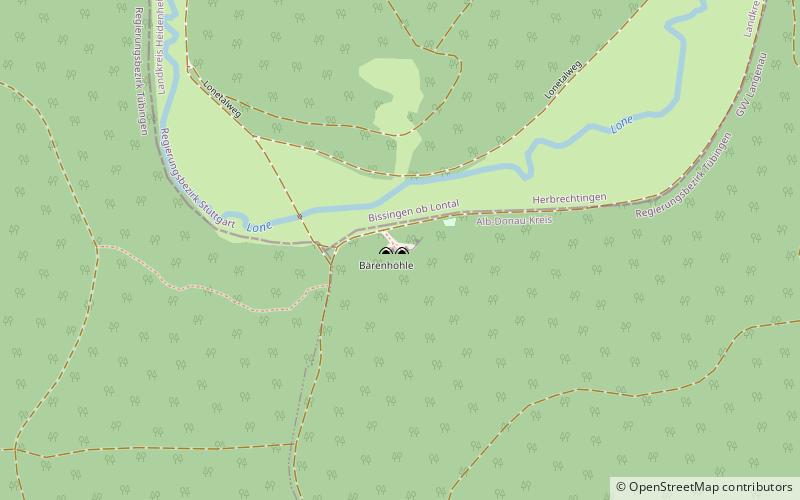Hohlenstein-Stadel


Facts and practical information
Hohlenstein-Stadel, nestled in the picturesque Lone Valley of Germany, is a prehistoric cave of significant archaeological importance. This cave has been a treasure trove for researchers, revealing insights into the lives of early humans during the Upper Paleolithic era. The site is most renowned for the discovery of the "Lion Man," an exquisite ivory sculpture that dates back approximately 40,000 years, making it one of the oldest known examples of figurative art.
The Hohlenstein-Stadel cave forms part of a series of caverns in the Swabian Jura region, an area recognized for its rich Paleolithic record. Excavations have unearthed a plethora of artifacts, including tools, ornaments, and evidence of early human habitation. The "Lion Man" artifact, in particular, has captivated the imagination of the public and scholars alike, due to its intricate craftsmanship and the symbolic complexity it suggests about the cognitive abilities of our early ancestors.
The cave's entrance, once a refuge for prehistoric hunters, is now a beacon for archaeologists and enthusiasts of human history. The site continues to be the subject of ongoing research, contributing to our understanding of the cultural and artistic expressions of early Homo sapiens. Visitors to Hohlenstein-Stadel can marvel at the historical significance of the finds and the enduring mystery surrounding the lives of the people who once inhabited this ancient dwelling.
Baden-Württemberg
Hohlenstein-Stadel – popular in the area (distance from the attraction)
Nearby attractions include: Vogelherd Cave, Caves and Ice Age Art in the Swabian Jura, Archäopark, Bocksteinhöhle.





